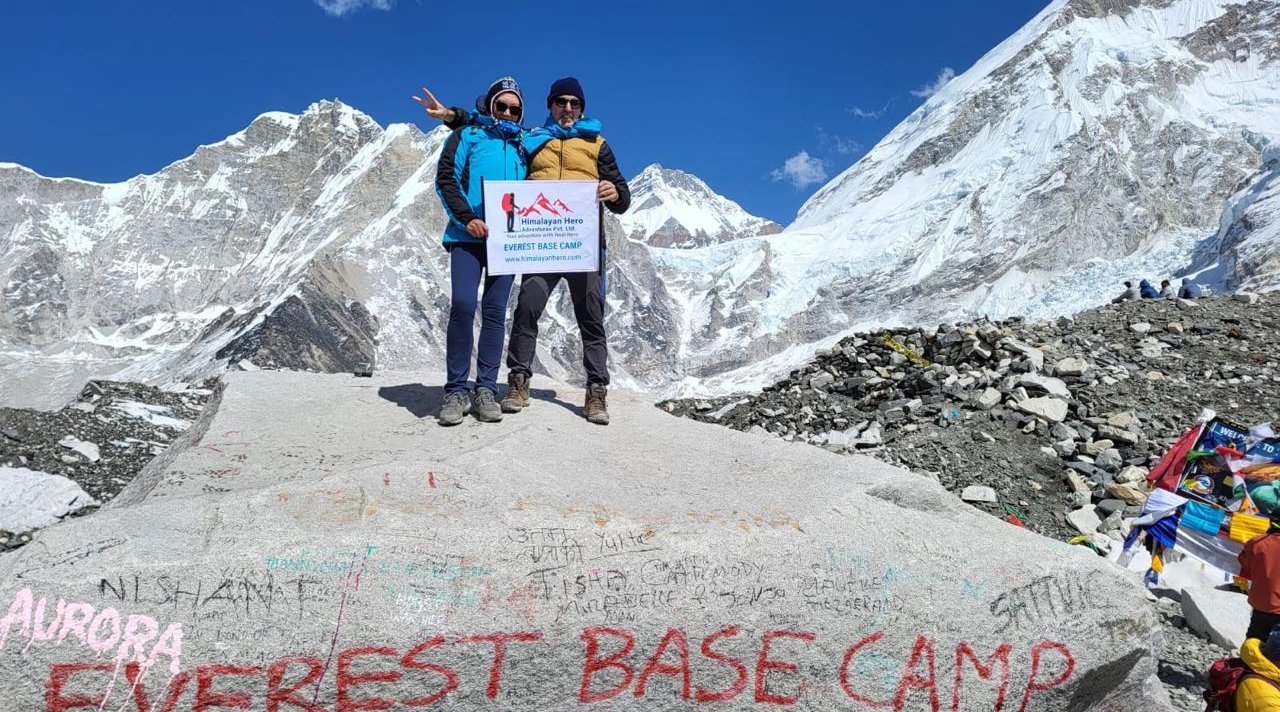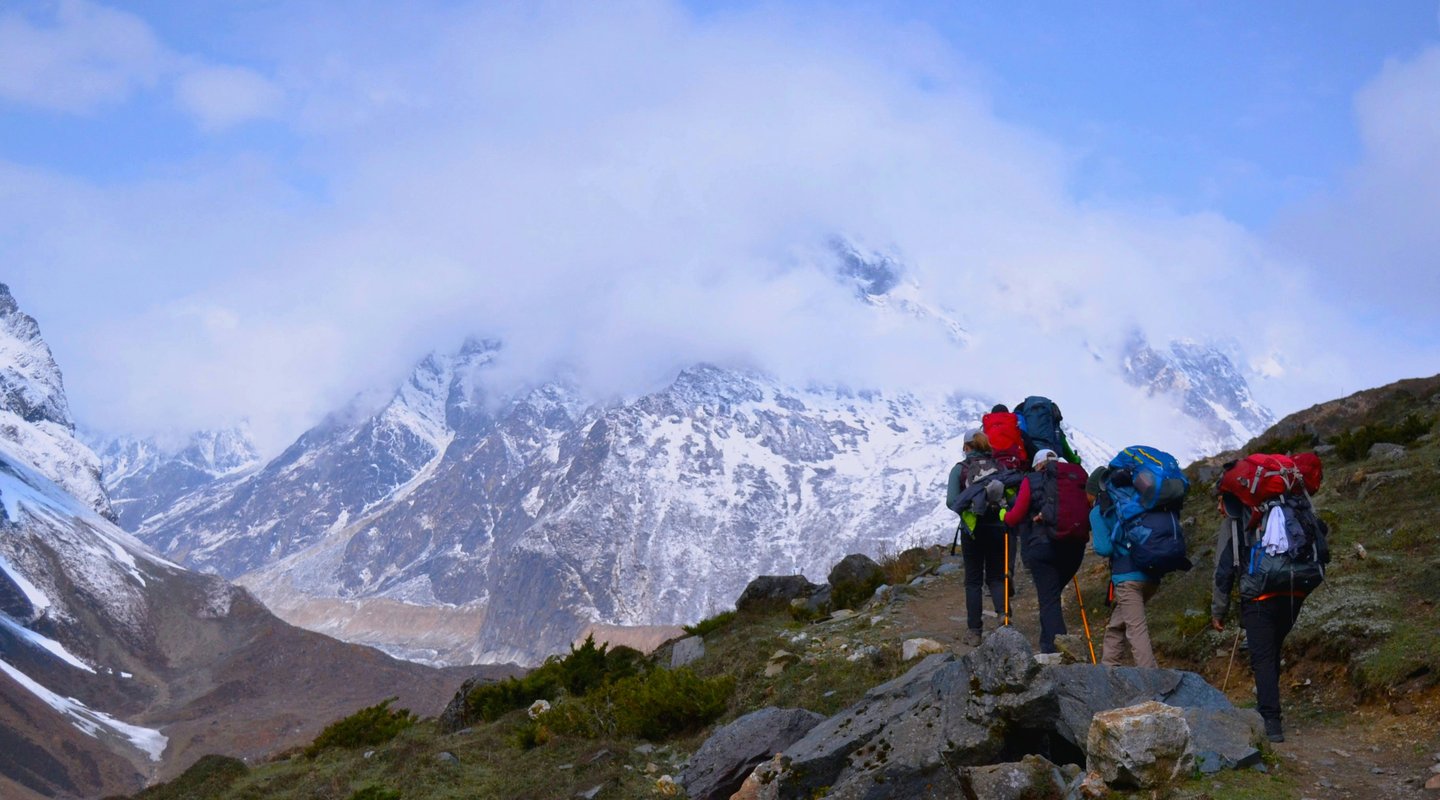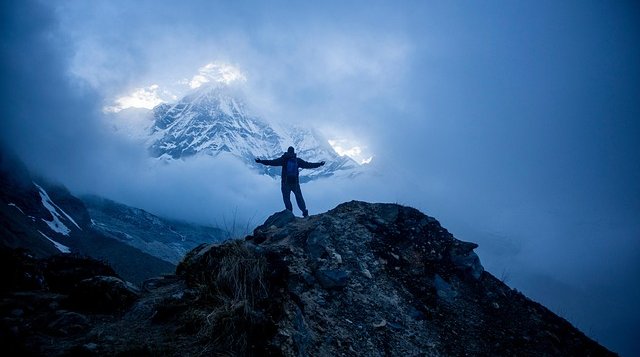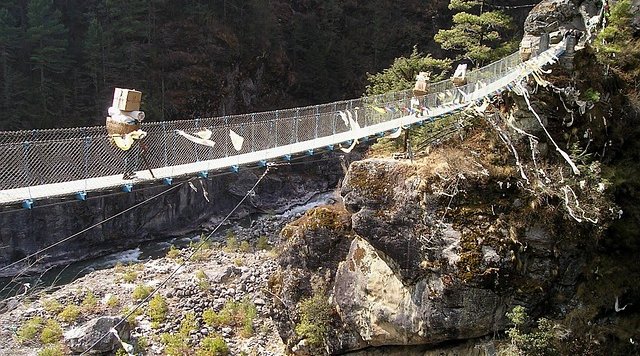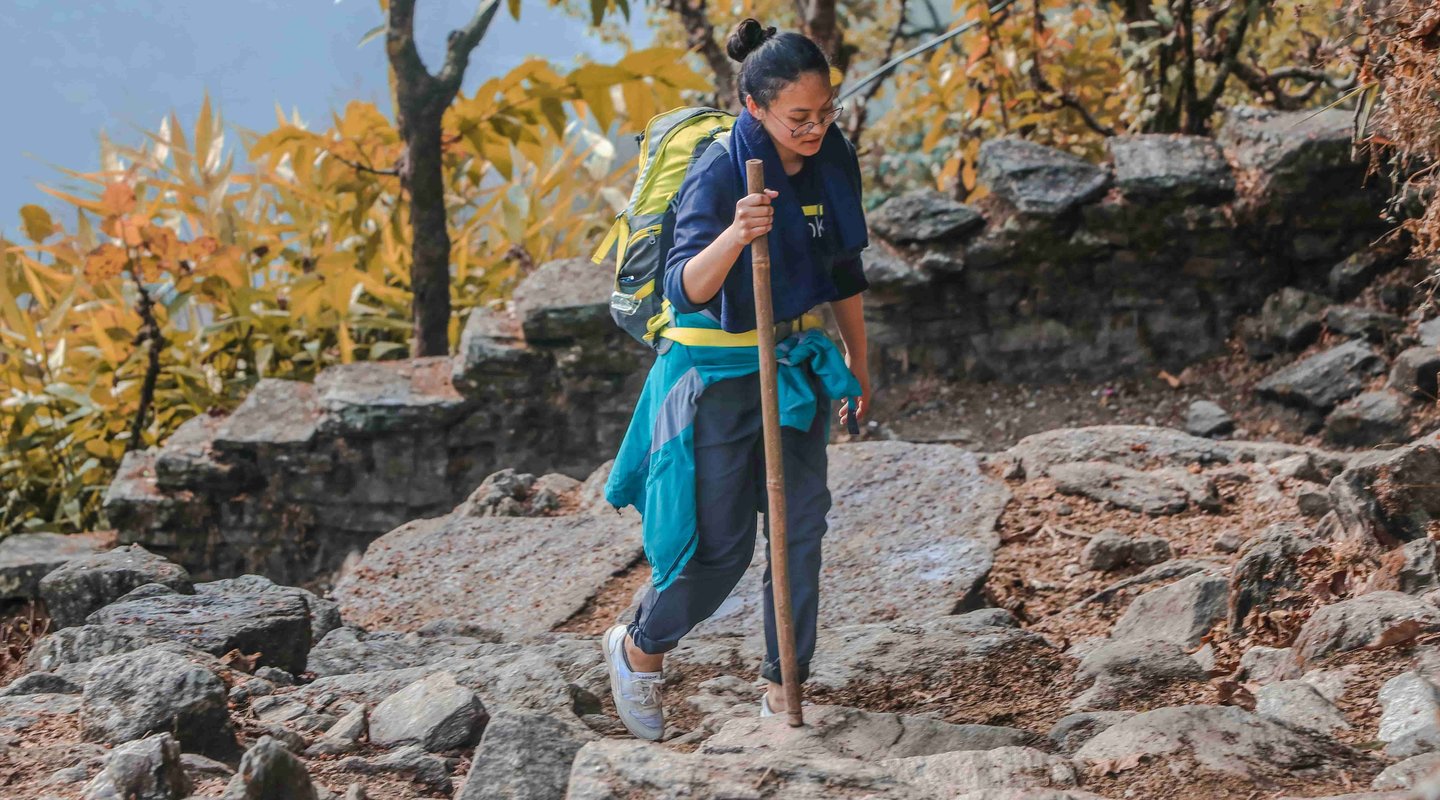The Everest Base Camp Trek is one that any enthusiastic trekker or lover of nature can add to in their dream list of journeys. The iconic trek, located amidst the great Himalayas, forwards breathtaking panoramic views, glowing cultural experiences, and an unrivaled sense of pride and achievement. For amateur trekkers and equally enthusiastic travelers, Everest Base Camp has made sure the voyage is truly unique and remembered for the lifetime of these holidaymakers. Take the opportunity to learn some key tips, must-know information, and expert advice from this in-depth guide to make the most of your time at Everest Base Camp.
The trekking trail to Everest Base Camp in Nepal showcases the mesmerizing beauty of the world’s tallest peaks, dramatic valleys, ancient Buddhist monasteries, sparkling glaciers, and breathtaking mountain landscapes. This iconic journey immerses trekkers in diverse ethnic cultures, offering a truly authentic experience. Along the way, you’ll be welcomed by the warm hospitality of the Sherpa community, delving into their rich traditions, vibrant culture, and distinctive way of life.
Explore The Three High Passes Thrilling Trek: Click Here
The Everest region in Nepal boasts a home to Sagarmatha National Park, which is listed as a UNESCO World Heritage site. This sanctuary is untouched and houses a lot of rare and endangered flora and fauna. Undisturbed wilderness eludes glimpses of elusive wildlife-the Snow Leopard among the other animals while trekking through it. These include the Namche Bazaar, a teeming trading area, and the Sherpa Museum, which has information on local culture and the Kala Patthar is considered the best viewpoint for the stunning views of Mt. Everest, Nuptse, Pumori, Lhotse, and other surrounding peaks, which makes it an essential part of this legendary Everest trek.
Trekking on the Everest Base Camp Trail
It includes Kathmandu's historical places and the panoramic flight from Kathmandu to Lukla, with awesome sights of the Himalayas; after which begins your trek to these famous villages of Phakding,Namche Bazaar,Tengboche, Dingboche,Lobuche, and ends with the iconic Kala Patthar and Everest Base Camp. This bedecked with colored prayer flags, stone carvings, and silent chortens speaking of the spirituality that pervades the Himalayas. In its course, it boasts views from the celebrated Everest View Hotel, the historical monastery in Tengboche, and it showcases the Khumbu Glacier and the magnificent ice fall.
Hightlight of the Everest Base Camp Trek
Breathtaking Scenery
The Everest Base Camp Trek is a trek from lush green valleys to snow-clad peaks of the Himalayas, promising some of the most spectacular views on the planet. Key highlights include: Kala Patthar trek experience: Watch a stunning sunrise with panoramic views of Mount Everest. Glacier views on Everest trek: Walk alongside the famous Khumbu Glacier. Everest trek Himalayan panoramas: Enjoy vistas of iconic peaks like Lhotse, Nuptse, and Ama Dablam. Tengboche Monastery trek: It is a spiritual hub, which offers great views.
Cultural Encounters
This trek is also a cultural experience. Highlights are as follows:
Sherpa culture Everest Base Camp: Experience the culture of Sherpa people.
Buddhist monasteries on EBC trek: The route will lead to spiritual enlightenment.
Namche Bazaar local market: It is a local marketplace where unique souvenirs are available.
Meeting locals on Everest trek: Warm reception in Sherpa villages.
Everest Base Camp Trek Route
The Everest Base Camp Trek route is a very famous route that starts with a thrilling flight from Kathmandu to Lukla, also known as the "Gateway to Everest." From here, the trek unfolds through some of the most breathtaking landscapes and cultural highlights in the Himalayas.
Your Lukla to Everest Base Camp trek starts with scenic trails into lively Sherpa villages. You will acclimatize in Namche Bazaar, the bustling heart of the Everest region, with time to explore local attractions and immerse yourself in the culture of the Sherpa community. Continuing further along the EBC trek, one goes by beautiful villages: Tengboche with its popular monastery, a panoramic viewpoint showing a number of peaks, Dingboche among others. Along the trail, a tapestry of colorful prayer flags and chortens run in mirth with the serene landscape. Ideal combination that makes one's holiday spiritually and visually rewarding.
The high point in this trek is definitely the sunrise from Kala Patthar, wherein one gets unequal views of Mount Everest and Nuptse, Lhotse, and other towering peaks bathed in the golden morning light. Very magical moment and actually the highlight of this unbelievable journey.
From advanced trekkers to complete beginners, this Everest Base Camp trek itinerary has been tailored to suit anyone's craving for a once-in-a-lifetime experience among some of the world's tallest mountains, featuring awesome views and profound cultural exchanges.
Why Go for Everest Base Camp?
The Everest Base Camp Trek is an adventurous bucket-list trip and one of the most iconic trekking routes in the world. It offers great views of Mount Everest, along with other towering Himalayan peaks, including Lhotse, Ama Dablam, and Nuptse. This trek is the perfect combination of breathtaking natural landscapes and rich cultural immersion, making it a must-do journey for adventure enthusiasts.
The Everest Base Camp trail takes you through vibrant Sherpa villages, visits historic Buddhist monasteries, and treks on ancient pathways full of the history and customs of the Himalayas. Among the key highlights of this legendary trek are the majestic Khumbu Glacier, the famous vantage point at Kala Patthar, and the spiritual haven of the Tengboche Monastery, nestled against a backdrop of snow-clad peaks.
It also passes through Namche Bazaar, the bustling heart of the Everest region, which allows one to feel the pulsating local market and soak in the vibrant culture of the Sherpas. On the route, you come across unbeaten warmth and hospitality from the Sherpa people themselves, giving you a further insight into their lifestyle.
The Everest Base Camp Trek is much more than an adventure in choosing; it's about beholding unbeatable natural beauty, blending with rich cultural heritage, and gaining lifetime memories of your achievements.
Is the Everest Base Camp Trek Beginner-Friendly?
EBC Trek is graded as a moderate to challenging adventure, including steep ascents and rugged terrain at high altitude. Physically demanding, the trek to Everest Base Camp is possible even for beginners with adequate preparation and training in fitness and guidance in the right way. With determination and the right approach, even those new to trekking can successfully reach Everest Base Camp.
How Difficult is Everest Base Camp Trek-Preparation
The difficulty level of the Everest Base Camp trek depends on your physical fitness, acclimatization, and previous trekking experience. The trail requires endurance and resilience as it involves walking for several hours a day over uneven paths and climbing to altitudes over 5,000 meters. Here's how to prepare for a rewarding and safe trekking experience:
- Acclimatization and High-Altitude Safety
Gradual acclimatization is the only way to avoid altitude sickness. Make rest days in places like Namche Bazaar and Dingboche to acclimatize your body to the thin air. Keeping your body hydrated and avoiding alcohol during the trek will also lessen the chances of problems related to altitude.
- Fitness and Endurance Training
The Everest Base Camp Trek requires building up your fitness level. Include some regular cardio workout, such as jogging, cycling, or swimming. Building the core and your legs through strength training will let you enjoy steep ascents and descents without any hassles. A few practice hikes before the trip can also get you ready for long days of walking.
3. High-Altitude Trekking: Essential Gear
Packing the right gear equates to comfort and safety on the trek. Key essentials include: sturdy and comfortable trekking boots; a high-quality, weather-resistant down jacket; a sturdy backpack with enough space for your essentials; layers of warm clothing, gloves, and a hat to protect against freezing temperatures. 4. Mental Preparation and Guidance
While physical preparation is essential, much of the trekking depends on mental strength. Being motivated and taking the trek with an experienced guide or group will make a lot of difference in your trekking experience. Professional guides can help with route planning and safety measures, which will add immense value to your journey.
Duration and Best Time to Trek to Everest Base Camp
The length of the EBC trek is usually taken for 12 to 14 days because this duration allows for complete acclimatization and enjoyment of the trek. For those who have less time, options like the Everest Base Camp trek in 7 days-which include helicopter rides-offer a faster alternative without compromising the experience. The best time for trekking to Everest Base Camp depends on preference and weather conditions. This is also an excellent time to go trekking in spring. From March until May, rhododendrons bloom, and usually, the sky is clear. Another good time is autumn-September to November-stable weather and perfect visibility will let one enjoy fantastic views of the mountains. At this time, winter trekking can also be very quiet around Everest Base Camp, although it is much colder and more challenging than at any other time during the year.
Accommodation and Food on the Everest Base Camp Trek
Accommodations and food options range from basic to high-class on the route to Everest Base Camp. Tea houses or lodges in this area provide basic comforts for trekking to have a warm night of rest. In fact, most lodges on Everest Base Camp are basic room-style hotels that include shared bathroom facilities. At the very Base Camp itself, however, there is no permanent accommodation, so it's all tents.
Mealtime is a feature on the trek, offering ample opportunity to sample local Himalayan cuisine. Favorites include traditional dal bhat, momos-dumplings-and hearty Sherpa stew. Food prices range between $5 and $10 per meal, though often become more expensive with increasing altitude, since food supplies have to be carried from lower altitudes by human porters.
It will either be experiencing warm hospitality at the teahouse or taking hot meals up from the day-long trek, whatever one goes through in the Everest Base Camp promises a different experience blended with the unique cultural encounter with breathtaking landscapes.
List of Foods in Everest
Dal Bhat-Lentil soup with steamed rice and vegetables/pickles.
Momo- A Nepalese dumpling with a filling of vegetable, chicken, or yak meat.
Yak Cheese – A creamy, tangy cheese made from yak milk.
Sherpa Stew (Thukpa) – A noodle soup made with vegetables, meat, and local spices.
Tibetan Bread – Fried, puffy bread often served with honey or jam.
Tsampa – Roasted barley flour mixed with butter tea or water.
Butter Tea (Po Cha) – A salty beverage made with yak butter, tea leaves, and salt.
Fried Rice – Stir-fried rice with vegetables or meat.
Porridge (Oatmeal) – A warm, comforting breakfast dish often served with honey and nuts.
Noodles – Stir-fried or in soup, commonly served with vegetables and sometimes meat.
Chapati – Flatbread typically served with vegetables or meat curry.
Yak Steak – Grilled yak meat, a local delicacy.
Potato Curry – A simple, flavorful curry made with potatoes and spices.
Apple Pie – A western-inspired dessert often available in tea houses.
Muesli – A combination of rolled oats, nuts, and dried fruits that constitute a regular breakfast.
Daal (Lentil Soup) – Lentil soup is a traditional preparation considered as a side dish in a meal.
Vegetable Curry – Variety of vegetables prepared in a spiced curry.
Chocolate Bars – One of the most carried snacks for immediate energy gain during the trek.
How to avoid acute mountain sickness during the Everest Base Camp Trek:
In order to avoid altitude sickness during the Everest Base Camp trek, one should be properly hydrated, ascend gradually to let the body adjust, and preventive medication for AMS like Diamox can also be taken.
Everest Base Camp Trek Weather Preparation: During the Everest Base Camp trek, clothe yourself in layers to battle the changing weather. It is comfortable and will serve you for the whole day as, at different altitudes, the temperature keeps on changing. Essential Medical Kit
for Everest Base Camp: Make sure to prepare a complete medical kit for your Everest Base Camp trek. Include very important items such as bandages, pain relievers, and altitude sickness tablets to keep you ready for any health issues during the trek.
Everest Base Camp Trek Cost
The cost of the Everest Base Camp Trek will depend on several factors: how long you trek, what season you travel in, and whether you are trekking independently or with a guide. Below is an overview of the average costs for different types of treks:
Budget Trek: $900 – $1100 (Independent trekking with basic amenities).
Mid-range Trek: $1200 – $2,000 (Guided trek with better accommodations and services).
Luxury Trek: $3,000+ (Includes premium services such as helicopter rides and high-end facilities).
More expenses include some important permits for Everest Base Camp, gear rental, and tips for your guides and porters. The trekking budget at Everest Base Camp depends on personal preferences, which means serious planning is needed regarding an unforgettable adventure. Join with Himalayan Hero Adventure Today on a lifetime unforgettable adventure.
Contact our expert team to customize your perfect Everest Base Camp experience:

